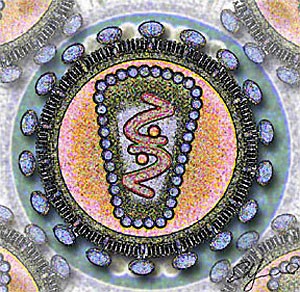Researchers at the UA have found new clues that could potentially lead to a better understanding of human immunodeficiency virus and the possibility of a reduction in HIV-related deaths.
By studying the simian immunodeficiency virus found in African green monkeys, UA researchers have discovered that the monkeys had an HIV-like virus after the lineage split into four species, dating the virus to as recently as 3 million years ago.
This differs from the previously accepted theory that the monkeys had carried the disease before the lineage split.
“”The main objective of our work was to determine the age of SIV in African green monkeys,”” said Joel Wertheim, a graduate associate and an ecology and evolutionary biology doctoral student. “”We have shown that it is younger than the monkeys, but in the future we hope to get a more precise date.””
In recent years, the SIV virus has stopped killing monkeys, and researchers hope that HIV will follow suit.
SIV and HIV have a common ancestral lineage, Michael Worobey, assistant professor of ecology and evolutionary biology, said in a press release.
“”If SIV was initially virulent, our results suggest that it may have become benign faster that previously thought,”” Wertheim said.
One misconception about SIV derived from the research was that transmission went down the family tree. It was actually spread between primate species and evolved on a host-specific basis.
Humans contracted HIV from interactions with chimpanzees, starting with infections from hunting and butchering chimps.
Worobey, along with Wertheim, published their research in a document entitled “”A Challenge to the Ancient Origin of SIVagm Based on African Green Monkey Mitochondrial Genomes,”” found in the July issue of PLoS Pathogens. The National Science Foundation and National Institutes of Health helped fund the research.
Werthiem said he was not satisfied with conclusions from previous research and so he began doing his own investigations.
His team sequenced mitochondrial DNA, genes passed down from mother to child, in the four species of African green monkeys.
The species of monkeys he studied were the sabeus monkey, Chlorocebus sabaeu, which live in western Africa; the tantalus monkey, Chlorocebus tantalus, which is found in central Africa; and two types of vervet monkey, Chlorocebus pygerythrus, which lives in eastern and southern Africa, and Chlorocebus aethiops, which lives in northeast Africa.
After matching the ancestral relationships with the virus tree, there was no correlation between the mitochondrial DNA and the virus, Wertheim said.
“”For a long time, they were assumed to be the same,”” he said. “”When I went back to the original papers, I wasn’t convinced.””
Researchers also examined that geographic distribution of the four monkey species in relation to the spread of SIV. Their hypothesis was that the infection began with the westernmost species, then went east and either north to south or south to north.
The researchers will next determine when monkeys first developed SIV and study other species of monkeys with the virus.
HIV an issue for students
On-campus, HIV is still not often talked about, demspite statistics that show that the disease is prevalent in young people.
One in 500 college students is infected with HIV, according to the Web site of the Center for Disease Control and Prevention and the American College Health Association.
HIV weakens the immune system and eventually leads to acquired immunodeficiency syndrome, or AIDS. It is possible for a person to contract HIV and show no physical signs of the disease. They may not even feel sick, but they can still infect others.
Symptoms can vary by person and may include swollen glands, fever and diarrhea. Women should heed the fact that hard-to-treat vaginal yeast infections and cervical cancer may be linked to HIV.
There is no known cure for HIV, and infection is possible after one sexual encounter or even a sharing a syringe with someone who is infected. HIV can be transmitted by vaginal, oral or anal sex, coming in contact with an infected person’s blood through the shared use of a needle and from an infected mother to her child during pregnancy or birth and through breast feeding.
It cannot be spread from kissing, unless the person comes in contact with an infected person’s blood, semen, vaginal fluid or breast milk.
HIV patients are given therapy and antiretroviral agents to keep the virus at bay.
There are many places around Tucson at which to be tested, including Campus Health and the Southern Arizona AIDS Foundation, 375 S. Euclid Ave.









